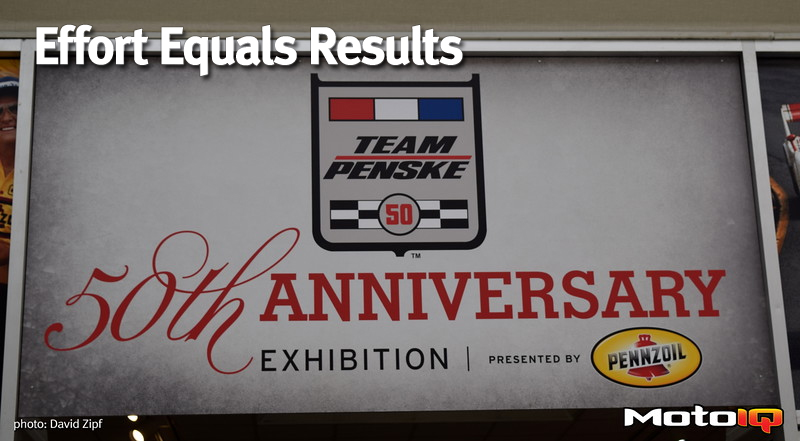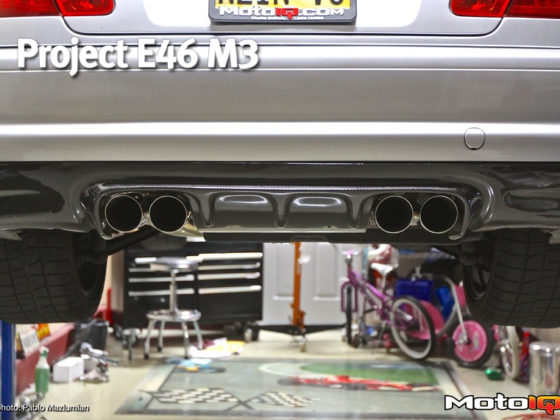Effort Equals Results: 50 Years of Penske Racing
America is home to the two greatest names in racing: Foyt and Penske. There is nobody who could drive like AJ Foyt: Give him four wheels and an engine and he would win in it. While other drivers have won more races and championships in their respective categories, nobody else comes close to AJ in terms of races won in more categories. Name another driver who has won the Daytona 500, the Indy 500 (4 times), the 24 Hours of Daytona, the 24 Hours of LeMans, and the 12 Hours of Sebring. Few drivers can also claim they continued to drive after breaking their back, nearly amputating an arm, and crushing both of their legs. This to me is why AJ will always be the greatest driver who has ever sat behind the wheel of a racecar. However the greatest man to ever lead a racing team is Roger Penske. NASCAR, Formula 1, Can-Am, Trans-Am, ALMS, IMSA, V8 Supercars, and of course IndyCar: All series where Roger has fielded cars; cars that have won. In 2016, Penske Racing celebrates its 50th year and as the track that helped make Roger who he is, the Indianapolis Motor Speedway Museum has a special exhibit on Penske Racing to commemorate this golden anniversary.
 This car was the genesis: the very first car Team Penske ever entered into an Indy 500. This LolaT152 was entered by Roger in 1969 for the late, great Mark Donohue. Mark qualified 4th in the field and finished a very respectable 7th overall, winning rookie of the year. He ran as high as 3rd, but had to pit to replace a failed magneto late in the race, scuttling his chances of a podium finish in his debut. Roger himself was a driver, and a very successful one, in SCCA racing. He even competed in the very first two USGPs held at Watkins Glen in 1961 and ‘62 finishing 8th and 9th respectively. However, in 1965, Roger quit racing when an offer to run a Chevrolet dealership was too good to pass up. He decided to become a businessman, but the racing bug never let up. Penske Racing was formed only one year later in 1966.
This car was the genesis: the very first car Team Penske ever entered into an Indy 500. This LolaT152 was entered by Roger in 1969 for the late, great Mark Donohue. Mark qualified 4th in the field and finished a very respectable 7th overall, winning rookie of the year. He ran as high as 3rd, but had to pit to replace a failed magneto late in the race, scuttling his chances of a podium finish in his debut. Roger himself was a driver, and a very successful one, in SCCA racing. He even competed in the very first two USGPs held at Watkins Glen in 1961 and ‘62 finishing 8th and 9th respectively. However, in 1965, Roger quit racing when an offer to run a Chevrolet dealership was too good to pass up. He decided to become a businessman, but the racing bug never let up. Penske Racing was formed only one year later in 1966. The Lola was powered by the standard engine of the day: the venerable Offy 4-banger. Like most Offys in the late 60s, this one sat behind the driver with a big turbocharger hanging off the side. This motor displaced 161 ci (2.6L) and was run on methanol, a mandatory rule set in place after the tragic 1964 500. You will notice this car very closely resembles the Lotuses we featured a year ago: imitation is the sincerest form of flattery and after Lotus showed how quick a light, rear engined car was, everyone copied it. By 1969, only a handful of front engined cars even attempted the 500.
The Lola was powered by the standard engine of the day: the venerable Offy 4-banger. Like most Offys in the late 60s, this one sat behind the driver with a big turbocharger hanging off the side. This motor displaced 161 ci (2.6L) and was run on methanol, a mandatory rule set in place after the tragic 1964 500. You will notice this car very closely resembles the Lotuses we featured a year ago: imitation is the sincerest form of flattery and after Lotus showed how quick a light, rear engined car was, everyone copied it. By 1969, only a handful of front engined cars even attempted the 500. The front suspension is pretty standard unequal length A-arms. The upper arm is interesting as the adjustment for caster is not inline with the spherical bearing. Also interesting: in 1969 all-wheel drive was legal. Check out the driveshaft coming out of the front upright. 1969 would be the last year of 4WD at Indy.
The front suspension is pretty standard unequal length A-arms. The upper arm is interesting as the adjustment for caster is not inline with the spherical bearing. Also interesting: in 1969 all-wheel drive was legal. Check out the driveshaft coming out of the front upright. 1969 would be the last year of 4WD at Indy. Penske and Donohue would not have to wait long for their first 500 win. It came in 1972 in this McLaren M16B. Penske utterly dominated the race. Gary Bettenhausen, in a twin McLaren, lead 138 laps before dropping out in the final 25 laps with ignition issues. Donohue was able to pick up the lead with 13 laps to go and held on for the win. This would be the first of Penske’s many Indy wins, but sadly the only for Donohue: He would later die in practice for the Austrian Formula 1 GP in 1975. Donohue is another name that belongs in the upper echelons of racing: with wins in Can-Am, IndyCar, IROC, Trans-Am, and NASCAR. His best result in F1 was a 3rd in the 1971 Canadian GP.
Penske and Donohue would not have to wait long for their first 500 win. It came in 1972 in this McLaren M16B. Penske utterly dominated the race. Gary Bettenhausen, in a twin McLaren, lead 138 laps before dropping out in the final 25 laps with ignition issues. Donohue was able to pick up the lead with 13 laps to go and held on for the win. This would be the first of Penske’s many Indy wins, but sadly the only for Donohue: He would later die in practice for the Austrian Formula 1 GP in 1975. Donohue is another name that belongs in the upper echelons of racing: with wins in Can-Am, IndyCar, IROC, Trans-Am, and NASCAR. His best result in F1 was a 3rd in the 1971 Canadian GP.



